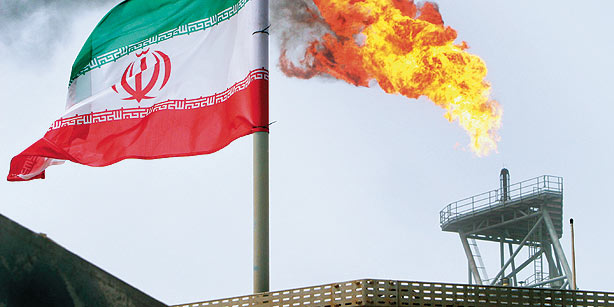Dutch company eyes building Iran-Oman gas pipeline

By Fatma Babayeva
Intecsea, the offshore engineering company from the Netherlands has expressed interest in joining the construction of a seabed pipeline for supplying Iranian gas to Oman.
The company has officially submitted a proposal to participate in the project, said the project's manager Mohammad Akbarzadeh, Mehr news agency reported on June 5.
The construction of the Iran-Oman pipeline will make Iran’s ambition to become LNG exporter come true. With the realization of this pipeline, Iran will be able to use Qalhat LNG plant – which has the capacity to liquefy 10.4 million tons of LNG per annum - in Oman as the Islamic Republic does not have one.
Intecsea has earlier undertaken construction of some offshore pipelines in Iran's South Pars gas field, Akbarzadeh noted, adding the company can cooperate with Iran by providing special engineering and technical services and studies.
The studies on the project have been completed by 22 percent, the project’s manager added.
Previously, South Korea's state-run Korea Gas Corp (KOGAS) and National Iranian Gas Company (NIGC) signed a memorandum of understanding (MoU) on constructing three major gas pipelines in the Islamic Republic including the Iran-Oman gas pipeline which experts say requires at least $1.5 billion-investment.
Iran will export 28 million cubic meters of gas to Oman per day via a sub-sea pipeline within 15 years, according to the agreement signed between Tehran and Muscat in 2013.
In September 2015, after bilateral negotiations in Tehran it was announced that the project will be operational by late 2017.
Almost a third of the gas exported by Iran to Oman will be liquefied, and the rest will be consumed domestically.
The Oman-Iran pipeline which will stretch 400 kilometers composed of two sections: onshore and offshore.
Onshore section of the pipeline extends for 200 kilometers from Rudan to Mobarak Mount in southern Hormozgan province, whilst the seabed section between Iran and Sohar Port in Oman will stretch for another 200 kilometers.
The groundwork for laying the subsea pipeline between Iran and Oman has began in April 2016.
After the sanctions imposed on Iran by the Western countries were lifted, Iran has been successfully ramping up its oil exports to the pre-sanctions level (2.2 million barrels per day). Moreover, the country is also ambitious to increase gas exports to the global market.
Nevertheless, Iran lacks necessary infrastructure to realize its gas export targets. It needs investment to expand its gas pipeline and build LNG facilities.
Currently, Iran exports gas to Turkey (7.8 billion cubic meters in 2015), and sends gas to Azerbaijan’s Nakhchivan on the basis of swap deal. In return, Azerbaijan provides equal amount of gas to Iran across the border.
Iran has gas export deals with Iraq, Pakistan and Oman around 100 million cubic meters per day.
In order to supply the north east part of the country with the natural gas, Iran buys gas from Turkmenistan as it is cheaper to import gas rather than build a pipeline infrastructure to ship natural gas from south to north of the country through Alborz mountains.
Iran’s estimated gas reserves amount to 33 trillion cubic meters.
---
Fatma Babayeva is AzerNews’ staff journalist, follow her on Twitter: @Fatma_Babayeva
Follow us on Twitter @AzerNewsAz
Here we are to serve you with news right now. It does not cost much, but worth your attention.
Choose to support open, independent, quality journalism and subscribe on a monthly basis.
By subscribing to our online newspaper, you can have full digital access to all news, analysis, and much more.
You can also follow AzerNEWS on Twitter @AzerNewsAz or Facebook @AzerNewsNewspaper
Thank you!
